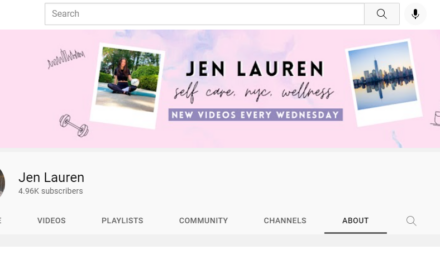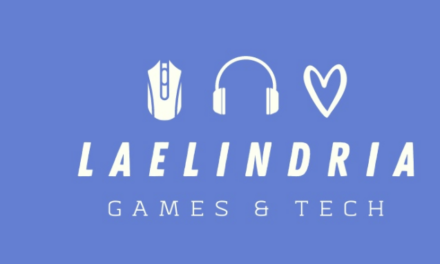
JULY 5, 2024
5 things to do
Ready to leave your day job?
One of the scariest times for content entrepreneurs is deciding when to leave your traditional job. A. Lee Judge, founder of Content Monsta, shared some ideas at CEX to help creators become full-time content entrepreneurs.
Here are five tips to help you prepare to leave your day job and run your content business full time.
1. Test the culture: If you work in a culture that encourages your side business, give them confidence that supporting your content business growth benefits their business. Also, nurture relationships that might be valuable to your business.
If your workplace is less supportive of your side business, you should keep clear lines between your content business and your day job.
Don’t work on something for your business if you’re on their clock, and don’t use any of your employer’s equipment for the side business. It can be tempting to go to an event for work and hand out your card for your side business or use a new company laptop to edit some videos, but that will only get you in trouble.
Likewise, make sure your employer respects your time too. If they don’t, you’ll face challenges growing your business if you don’t have time to work on it.
2. Save money: Lee recommends saving at least six and ideally closer to 12 months of your salary before leaving your day job. With those savings, you can “borrow” from yourself as you get the business started and have a safety net if something goes wrong.
Lee uses the “borrow” concept because entrepreneurs shouldn’t get used to living off their savings and should repay them as soon as possible.
3. Ensure the audience can support the business: Know your total addressable market and recognize the revenue potential. For example, if you are making a podcast for people who want to get out of their parents’ basement, your audience has no money for your products or the products advertised. As Lee says, you can’t get blood from a turnip.
Even if your audience can afford to buy, don’t quit your job until those products and services are viable. That’s when people are paying for them.
4. Avoid dependency: In Lee’s experience, it’s best not to rely heavily on revenue from ads or sponsorships, especially at the start. Neither stream is particularly predictable, and for them to be viable, you need both your audience and your sponsors solidly in place.
Instead, Lee recommends selling direct products and services. Content Monsta started with video production services. Having a source of revenue you control allows you to predict your income and plan your business properly.
5. Leave gracefully: As you leave your traditional job, there’s no sense in burning bridges. Co-workers and even managers might move to other companies or industries. Better to make them positive connections rather than obstacles. Every company that Lee has worked for ultimately became a client for his business. Besides, you may want to return if your content business doesn’t work out. Best to keep all options viable.
-Ann Gynn
What tips do you have for preparing to leave traditional employment and enter content entrepreneurship full-time? Reply to this email or contact [email protected].
5 things from the tilt
- Bring your questions, or just listen in to Tilt Your Business. The podcast hosted by Michelle and Ann starts at 12 p.m. US EDT every Tuesday.
- If you want to be truly successful as a content entrepreneur, you need to strategically place content collaborations into your content business. (Content Inc.)
- A special holiday episode covering the latest Supreme Court/Social Media decision and one million checkboxes. (This Old Marketing)
- Matt and Lauren review five things you’ll need to know before you start on your publishing journey! (Publish & Prosper)
- Last chance to purchase the CEX Digital Pass during our summer madness sale. Save over 50% when you use code SUMMER. Buy today as the sale ends this weekend!
5 things to know
Money
-
Big growth: These creator revenues from social media tripled since 2021: tipping ($160M), subscriptions ($270M), and merch ($450M), according to the report Creator Economy Revenues Forecast 2024. [Yahoo Finance]
Tilt Take: Tipping is an especially impressive number because the tippers don’t get anything in exchange like subscribers and merch buyers do.
Audiences
-
Browsing audio: Buzzsprout reports a significant jump for “web browser” podcast downloads in June. Google Podcasts, no longer available as an app, had a 1% share of downloads. [Sounds Profitable]
Tilt Take: Knowing how your audience downloads and consumes your content is critical to developing a successful distribution and marketing strategy. -
TV dominance: Almost 10% of TVs tuned into YouTube in May – the largest share for a streaming platform per Nielsen. Among streamers only, YouTube’s total viewership had an almost 25% market share. TV studios and streaming services are conflicted about embracing a YouTube strategy or focusing only on driving viewers to their platforms. [CNBC]
Tilt Take: Sounds like a familiar dilemma that content entrepreneurs face on rented vs. owned platforms.
Tech and Tools
-
AI down: Google pulled back from delivering AI overviews (AIOs) at the top of search results pages. Shortly after their global introduction in May, AIOs showed up in an average of 0.6% of desktop and 0.9% of mobile searches. By June, that had dropped to 0.2% on desktop and 0.3% on mobile. Health, science, and people and society categories saw the biggest drops. [Search Engine Land]
Tilt Take: Facts matter, and reports indicate those AI summaries weren’t always that accurate. That’s probably why health and science saw the biggest drops.
And Finally
-
Paper delivery: At VidCon, The Publish Press returned to a classic – they gave out physical newspapers and even had newspaper boxes on site. [Business Insider]
Tilt Take: Print is a way to stand out in a digital world.
Get more of the Full Tilt stories on TheTilt.com.
Know a content creator who’s going full tilt? DM us or email [email protected].
Want to advertise on The Tilt? Go here.
Or email us at [email protected].
Was this email forwarded to you? Get your own sub here.
Copyright ©2024 Lulu Press, Inc. All rights reserved.
Update your preferences | Unsubscribe | 700 Park Offices Dr., Suite 250, Durham, NC 27709





